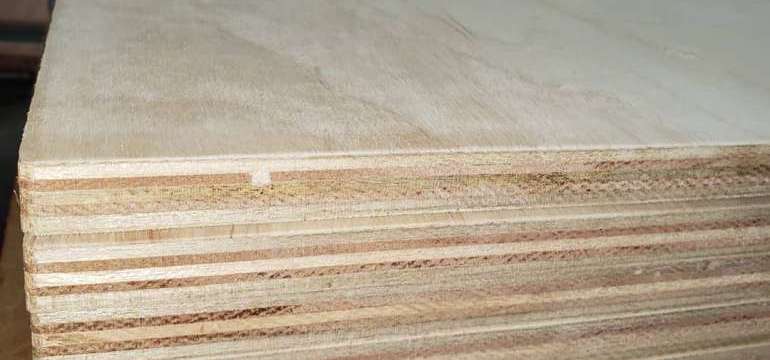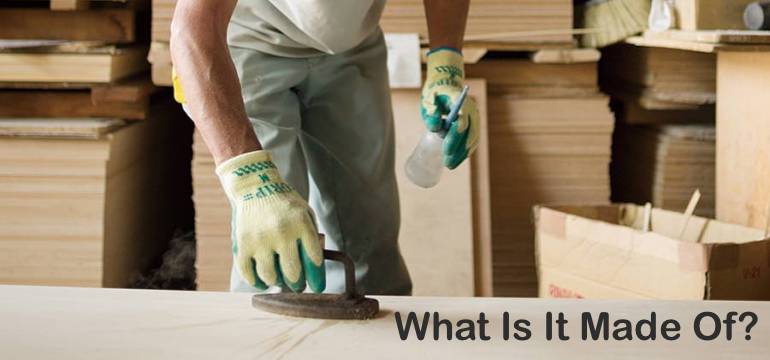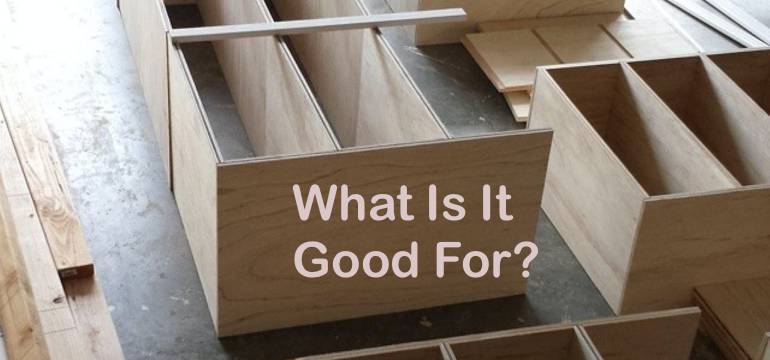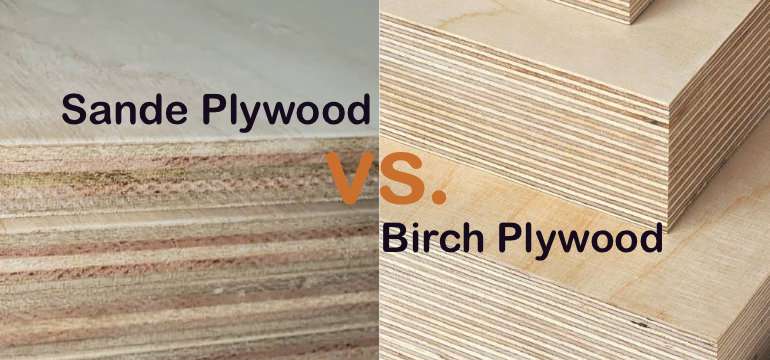Tackling a new project can be both exciting and overwhelming. You have first to decide which materials will help you to reach your end goal and allow your project to last for decades to come. This is why many people begin to research the various types of plywood available from their local home improvement stores and lumberyards.
Sande plywood is one of the most common types that should be considered, but you likely have a few questions. What is sande plywood? What is sande plywood good for?
Getting the answers to your questions can help you to make the right decision on your next project. Read on to find the answers to your questions and learn more about all of the potential sande plywood uses.
What is Sande Plywood?
You may be wondering just what sande plywood is and how you can incorporate it into your next building project. To put it quite simply, sande is a species of wood that is imported to be manufactured into plywood for a variety of uses. The more technical term for sande hardwood is Brosimum utile.
The other term that many people know this as is “mulberry wood”. Most of these trees are found in a large area of land ranging from Ecuador to Columbia. However, you may also find some of these trees in the Atlantic Coast area near Costa Rica.

It has consistent color tones.
Unlike some other species of wood, the sande lumber is relatively uniform in color. Sapwood and heartwood look almost identical, giving this sheet of plywood a consistent coloring throughout. Most pieces are either yellowish or light brown in color. Because their color is relatively neutral, it should make it easy to stain or otherwise finish this wood in the color of your choosing.
Sande plywood sometimes has a wide grain that is less noticeable than other species such as oaks. Other pieces may have grain that is much more narrowly interlocked.
The overall appearance of sande plywood can vary a good bit from sheet to sheet. Before you make a final purchase, you might want to look at several sheets of plywood to ensure that you purchase one that suits your needs. This is especially true if you plan to use it for a project that you will finish such as a piece of furniture or a cabinet.
This type of lumber is made for marine purposes, making it ideal for outdoor applications. Marine-grade plywood like this is designed to weather the storm with special binders and adhesives that can withstand water. Many other types of plywood are rated for exposure, meaning they can stand up to water for a short period of time. However, this type of plywood can withstand moisture indefinitely.
What is Sande Plywood Made Of?

Now that you understand that sande plywood most often refers to marine-grade plywood, it is important to understand what it is made of. The outer layers of sande plywood are usually constructed of extremely dense and durable material that can last you for years to come. Red oak is typically seen as a durable wood, and sande plywood will have a density that is very similar to this species.
Are you going to be disappointed by the visual of sande plywood? Other marine-grade plywood may require you to cover their surface area with shingles, siding, or another material. They are not usually designed to be aesthetically pleasing when the job is completed. This is another area where sande plywood really stands out. It usually has a striking finish that can easily be painted or stained according to what you want the final outcome to resemble.
The core typically has very few voids. This is ideal for many reasons. First, it prevents water from making its way between the layers of plywood and causing rot or decay from the inside out. Your plywood will last much longer as a result. Second, minimal voids in the core will make your plywood easier to cut, provides a better surface for staining, and prevents inconsistencies from telegraphing through the board.
As mentioned above, the veneer on top of the sande plywood is going to be relatively consistent in color from white-yellow to light brown. You can expect to see grain that varies from tightly woven to wider grain. Remember that this can easily be modified with stain or paint to match the project you are working on.
What is Sande Plywood Good For?
Because of its durability and beauty, there are a wide variety of uses for this type of plywood.

Some people prefer to use it to create beautiful shelving, furniture, or cabinets. It very easily accepts stain and paint which allows you to customize the project to your liking. Sande plywood can even be a great addition to your walls if you are looking to install some paneling.
However, more people are accustomed to using it for its waterproof properties. Marine-grade plywood like this is designed to hold up in many in-water applications. You may use this for a boating project. You may initially think that this is the only way to use marine-grade plywood, but you would be incorrect.
Most people are using it in areas of their homes where moisture is going to be present in significant quantities. Of all the sande plywood uses, this is by far the most popular. It is frequently used in rooms such as kitchens and full bathrooms where moisture is bound to come in contact with the walls or the subfloor.
Unlike other types of plywood that are made with standard adhesives, sande plywood is not likely to delaminate in these circumstances. You are getting more peace of mind for your home with the installation of this type of plywood.
Sande Plywood vs. Birch

Birch plywood is also relatively plentiful if you take a look around your local lumber yard. Many people attempt to compare the two types of plywood, but they really can’t be compared. When you study which is better, sande plywood vs. birch, it becomes clear that they really fall in two totally different categories.
Sande plywood and birch will both have a very similar aesthetic. Their grain is not overly prominent, and both range in color from white-yellow to a light brown. They can both be stained, painted, and finished to make your next project aesthetically pleasing. You can use both of them to build furniture, cabinets, or any other type of indoor project that catches your eye. They are both very useful in their own way.
Birch plywood is rated according to the standard plywood rating system. The first two letters will range from A to D. These letters denote the quality of the front veneer (the first letter) and the back veneer (the second letter). The third letter in the series is typically an X, which stands for exposure. Birch plywood that is scored with an X at the end means that it can stand up to the elements for a brief period of time.
The most common example of how to use a sheet of plywood rated for exposure is a new construction home. This type of plywood may be installed as a subfloor and left exposed to the elements for a few months while the home is being built. Under these conditions, the plywood should be fine as long as it is soon covered for good. If not, the layers will begin to delaminate and the plywood will come apart.
When it comes down to sande plywood vs. birch, the primary difference is water resistance. Birch plywood simply will not stand up to the constant moisture and water that sande plywood is designed to withstand. The glue that binds the layers of birch plywood together will quickly come apart. While birch plywood is only rated for exposure, sande plywood can stand up to water all the time.
When you’re trying to decide between sande plywood and birch plywood, you should really consider just how often the wood is going to be exposed to the elements. If the plywood is going to be mostly enclosed or indoors, then birch may be the best fit for you. Alternatively, projects that need to stand up to the storm should be made from sande plywood instead.
Preparing for Your Project
Understanding the intricacies of the different types of plywood can be mysterious to many people. They have a hard time deciphering what they need from the myriad species, sizes, and ratings available at their home improvement retail store. Sande plywood is a common item found in these places, but few people know how to use it appropriately in their project. Once you understand the sande plywood uses, you will start to think of all sorts of projects that can benefit from this marine-grade plywood.
Next time you prepare to build something, consider whether you need the beauty and durability that comes from a sheet of this sande plywood. With its ability to be stained and finished any way that you want, it’s certain to create a beautiful piece that you can treasure forever. Alternatively, you might just need something durable for your bathroom subfloor. No matter what your project is, sande plywood might just be the best thing for you.
- Painting Over Powder Coat and What You Need to Know - February 1, 2022
- How to Get Rid of Humidity in a Basement Without a Dehumidifier - December 17, 2021
- How to Fix a Crack in Drywall That Keeps Coming Back - September 22, 2021

Jeff
Monday 14th of March 2022
Is this plywood solid with no voids? How does it compare to Baltic Birch?
Jim
Monday 7th of February 2022
Fine article, Mike. I have used oak and birch plywood through the years for a cutting board in the kitchen. I would treat the wood with a commercial butcher block conditioning product, composed of food grade mineral oil and natural waxes. I've gone through good stretches, only replacing three boards over twenty years, as their top layer ply eventually wears through in areas. I'm guessing that I do not experience the separation and swelling of the ply's that you mentioned, since the oil/wax treatment is effective in preserving the wood. My question is: does the sande board offer a superior hardness on its top layer when compared to birch or oak? It's as important an issue as is the water resistance since it's constantly exposed to chopping with knives.
I'd appreciate any advice you could offer, and thanks for your time, JF